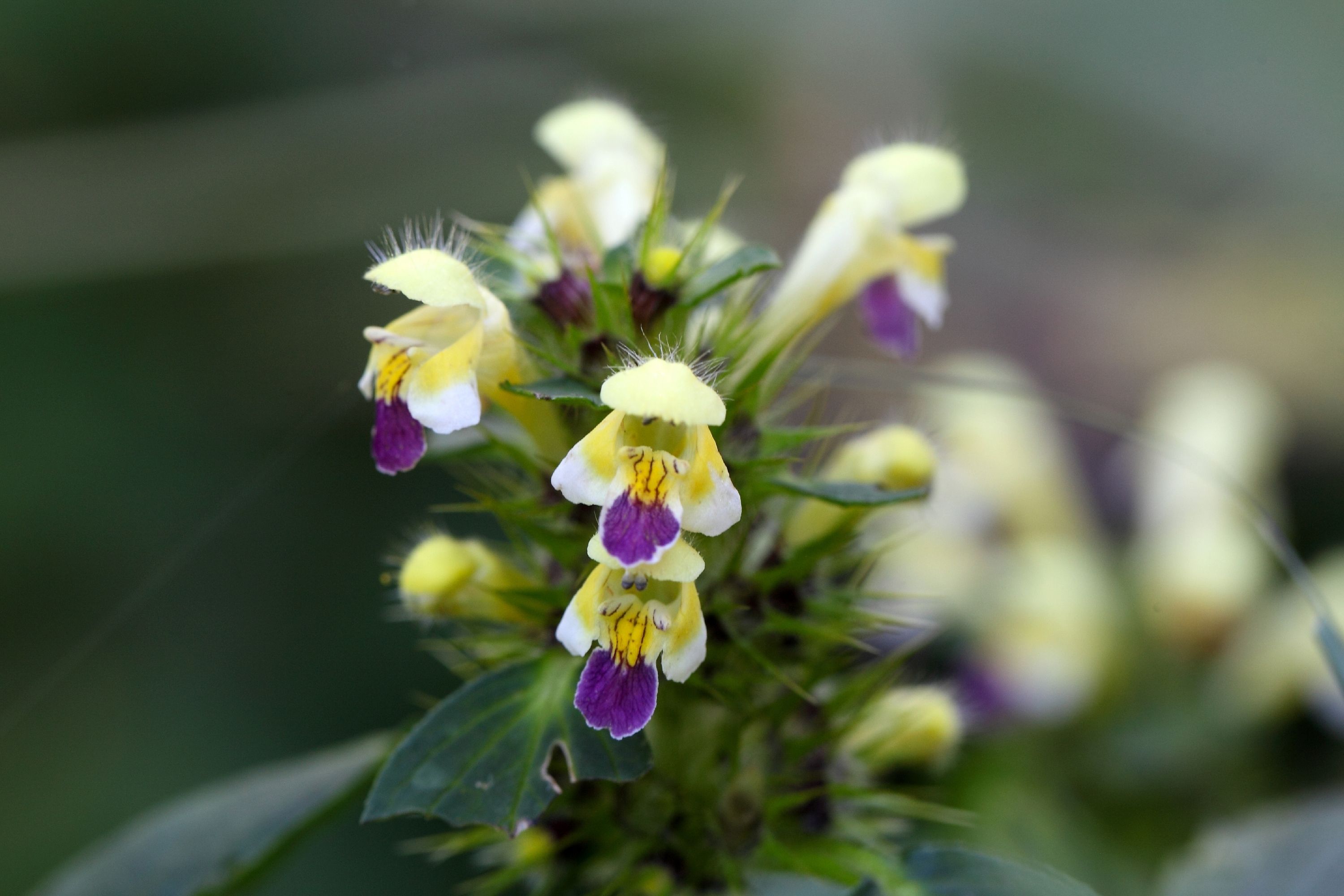Large-flowered hemp-nettle
(Galeopsis speciosa)

Description
Galeopsis speciosa is a flowering plant that belongs to the Lamiaceae family, also known as the mint family. It is commonly known as the "large-flowered hemp-nettle" and is native to Europe, Western Asia, and North Africa. This plant has been introduced to several parts of North America, where it is now considered an invasive species. In this article, we will explore the various characteristics and uses of Galeopsis speciosa. Taxonomy and Nomenclature: The scientific name of Galeopsis speciosa is derived from the Greek words "gala" meaning milk and "opsis" meaning appearance, referring to the milky-white color of the flowers. The species name "speciosa" means showy or splendid. The common name "large-flowered hemp-nettle" is derived from the hemp-like appearance of the plant and the presence of stinging hairs on its stems and leaves. Physical Description: Galeopsis speciosa is a biennial or perennial plant that can grow up to a height of 60-120 cm. The stem of the plant is erect, square-shaped, and covered with stinging hairs. The leaves are arranged oppositely along the stem, and are also covered with stinging hairs. The leaves are ovate to lanceolate in shape and can grow up to a length of 10-12 cm. The flowers of Galeopsis speciosa are arranged in dense, terminal clusters at the top of the stem. Each flower is about 2-3 cm long, and has a bell-shaped corolla with a pink or purple color, and a white center. The plant blooms from June to September, and produces nutlets that are small, black, and shiny. Habitat and Distribution: Galeopsis speciosa is native to Europe, Western Asia, and North Africa. It grows in a variety of habitats, including meadows, waste places, roadsides, and disturbed areas. In North America, it has been introduced and is considered an invasive species in several regions, including the northeastern United States and parts of Canada. Uses and Benefits: Galeopsis speciosa has been used in traditional medicine for various ailments, including respiratory problems, fever, and digestive disorders. It contains several compounds that have pharmacological properties, including phenolic acids, flavonoids, and iridoids. However, there is limited scientific evidence to support its medicinal use. Galeopsis speciosa is also used as an ornamental plant in gardens, and its flowers are attractive to pollinators, such as bees and butterflies. It is also used as a forage plant for livestock, as it is rich in protein and minerals. However, its use as a forage plant is limited due to its toxicity to some livestock species. Invasive Species: In North America, Galeopsis speciosa is considered an invasive species, as it can grow rapidly and outcompete native plants for resources. Its ability to produce a large number of seeds and its tolerance to a wide range of environmental conditions make it a successful invader. It can also be toxic to some livestock species, such as horses and cattle, due to the presence of pyrrolizidine alkaloids in its leaves and stems. Control Measures: Several control measures can be used to manage the spread of Galeopsis speciosa. Physical control methods, such as hand pulling and mowing, can be effective in small infestations. Chemical control methods, such as the use of herbicides, can also be effective but should be used with caution, as they can harm non-target species. Prevention measures, such as early detection and rapid response, can also be effective in controlling the spread of this invasive species.
Taxonomic tree:







